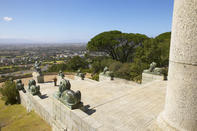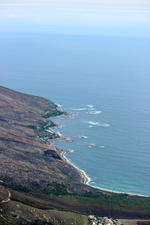Colourful Drive
The Southern Suburbs in the Cape Peninsula make for quite a scenic, colourful drive. Once you’ve past Groote Schuur Hospital, Main Road leaves behind the cacophonous city centre area and enters the quiet recitative of the Southern Suburbs. Not to be confused with the Southern Suburbs in Joburg, the Southern Suburbs of Cape Town are the sedate and settled heart of the suburban bourgeoisie.

This part of town contains Mostert’s Mill, the Rhodes Memorial, the Presidential residence of Genadendal (formerly known as Groote Schuur), the Baxter Theatre, Cavendish Square Shopping Mall, Kirstenbosch Gardens, Newlands Cricket Ground and The University of Cape Town (UCT), perhaps the most beautiful university campus in the world.
As you pass through Rosebank, Rondebosch, Newlands and Claremont, the mountain turns its back and shows off the crags and crevices of its southern flanks. Grand houses, leafy avenues and discreet shops gradually take over from the bustle of the city, impressing on the visitor that most crucial element of Capetonian society, class distinction.
This gentility is short-lived however, and the Southern Suburbs soon give way to the colourful reality of Kenilworth, firmly located on the other side of the tracks. The honking gets louder, the houses get smaller and the shops get bigger as you move into the Western Fringes of the Cape Flats.
Victoria Drive

By the mid-1800s, Cape Town was growing apace and the need for improved access routes became apparent. Accordingly, a rough track was built over Kloof Nek down to Camps Bay, and then along the coast to Hout Bay. These early roads were rather rudimentary and, in 1884, it was decided that road-meister, Thomas Bain should be called in to build a proper road along the Atlantic Seaboard. The road was completed in 1888, using convict labour and funding from the Cape Town Divisional Council.
The result is the glorious Victoria Drive and, despite various improvements, it still substantially follows Bain’s original course. The road begins in the high-rise suburb of Sea Point.
 Lying at the south-western tip of Africa, the Cape Peninsula is on the Atlantic side of South Africa. A spectacular view of the Cape Peninsu...
Lying at the south-western tip of Africa, the Cape Peninsula is on the Atlantic side of South Africa. A spectacular view of the Cape Peninsu...